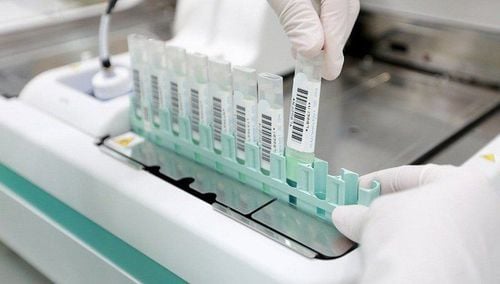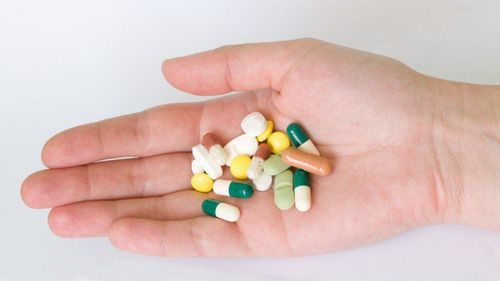This is an automatically translated article.
In medicine, sensitivity analysis can describe how well a test detects a particular disease or condition in people who actually have it. Sensitivity can also refer to how the body reacts to the environment or to drugs, chemicals, or other substances.
1. What is sensitivity analysis?
Sensitivity analysis, also known as susceptibility testing, helps doctors find the most effective antibiotic to kill pathogenic microorganisms. Infectious microorganisms are organisms such as bacteria, viruses, or fungi that enter the body and cause an infection. An actual sensitivity analysis is a test that determines the susceptibility of those microorganisms to one or more specific antibiotics.
Sensitivity analysis can also determine the drug's ability to kill harmful microorganisms. The results from these tests can help doctors decide which drugs are most effective for treating an infection in a particular case.
Physicians use sensitivity testing to determine the right antibiotic treatment and to monitor the bacteria's response to antibiotics. Both of the above directions are key in taking care of the patient's health in particular and the community in general.
2. Reasons to conduct a sensitivity analysis

Viêm họng mạn tính
Currently, antibiotic resistance of bacteria, viruses or fungi is no longer common, even many types of bacteria are resistant to most common antibiotics. This means that we cannot kill bacteria when they enter the body.
Sensitivity analysis is a useful and reliable tool for quickly determining whether bacteria are resistant to certain antibiotics.
Several types of antibiotic-resistant bacteria cause infections in the body including:
Chronic pharyngitis Recurrent urinary tract infections Pneumonia unresponsive to treatment A sensitivity analysis may be required apply if the infection does not improve even after therapeutic interventions. This will help doctors determine whether the bacteria causing the infection have developed resistance to antibiotics. The doctor will then prescribe which medication is most effective in this case.
3. How to conduct a sensitivity analysis

Bác sĩ có thể lấy mẫu vi khuẩn có trong nước tiểu để tiến hành phân tích độ nhạy
Sensitivity analysis is usually initiated with a bacterial sample. Your doctor will take these samples from the area where the infection occurred. Some typical bacterial samples that are commonly collected include:
Blood Urine Sputum Fluid obtained from the lining of the uterus Fluid collected from purulent wounds The above specimens will be sent to a laboratory and tested. cultured in special types of media to grow and carry out the multiplication process. These bacteria will form colonies or large groups of bacteria. These colonies will be exposed to different antibiotics. Then there are 3 possible outcomes including:
Susceptibility : Means bacteria cannot grow if the drug is present. This proves that the respective antibiotic is effective in killing the bacteria. Resistance: Means bacteria can still grow even in the presence of antibiotics. This means that the corresponding antibiotic is not effective in killing the bacteria. Intermediate: Bacteria are not completely resistant to the corresponding antibiotic, but higher doses are needed to completely kill the bacteria.
4. Risks of sensitivity analysis
In fact, sensitivity analysis has very little potential for risk and is mainly concerned with the specimen collection procedure, especially blood collection.
Rare risks of having a blood sample drawn may include:
Dizziness or fainting Hematoma: A bruise due to blood pooling under the skin Infection from an unsterilized needle Excessive bleeding after collection blood. If this condition persists, the patient should notify the technician or doctor. Before conducting a sensitivity analysis, physicians will also inform patients of the risks they may face during sample collection.
5. Results of a sensitivity analysis

Dấu hiệu kháng kháng sinh có thể do virus
As mentioned above, after culturing bacteria and exposing them to antibiotic media, doctors will analyze the results. These results can help determine the best antibiotic for a patient to treat.
There are three possible scenarios including:
Sensitization : Doctors will often select antibiotics that are reported sensitive after a sensitivity analysis, meaning they are effective in killing bacteria. cause disease. Intermediate : In case the results of the sensitivity analysis report no antibiotic in the susceptible group, the doctor will prescribe the patient to use intermediate class antibiotics, but the patient will have to take the appropriate dose. higher over a longer period of time. In addition, the risk of using intermediate class antibiotics also comes from their side effects. Antibiotic resistance: This result shows that the antibiotic being used has shown signs of resistance by bacteria, viruses or fungi and should not be used in the treatment of the disease. In addition, patients may be prescribed a combination of several antibiotics together if a bacteria is resistant to all of the common single antibiotics. Drugs in this category are often more expensive and may need to be given intravenously and over a long period of time to be effective.
Some infections may also require additional testing because the drugs used to treat them are not always effective even without antibiotic resistance.
In addition, these tests can also detect other harmful microorganisms from the patient sample. In this case, sensitivity testing is applied to find the right antibiotic or the right combination of antibiotics to give the most effectiveness in treating the different bacteria causing the problem. infection status.
Today, antibiotic-resistant bacteria are becoming more and more common. Bacteria, viruses or fungi are always changing, antibiotics may be effective today but just a few months later they are no longer enough to kill bacteria.
At that time, sensitivity analysis is an important and useful tool to evaluate the ability of antibiotics to kill bacteria, especially in cases where the patient has an infection caused by one or more resistant bacteria. with most antibiotics used for treatment.
Vinmec International General Hospital is one of the hospitals that not only ensures professional quality with a team of leading medical doctors, modern equipment and technology, but also stands out for its examination and consultation services. comprehensive and professional medical consultation and treatment; civilized, polite, safe and sterile medical examination and treatment space. Customers when choosing to perform tests here can be completely assured of the accuracy of test results.
Please dial HOTLINE for more information or register for an appointment HERE. Download MyVinmec app to make appointments faster and to manage your bookings easily.
Articles refer to sources: cancer.gov, healthline.com













